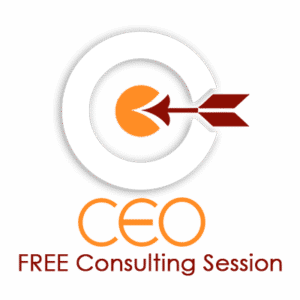
Summary: Some leaders firmly believe that individuals do not fundamentally change. This belief can profoundly impact an organization’s culture, employee morale, and productivity. Let’s explore the characteristics of such a leader and their potential effects on their organization.
Dear Dr. Sylvia,
The Founder and CEO of my company and I had a dispute last week.
It left me wondering if I could stay in this closed business environment, where there is no path to growth and development.
I am the head of HR and want to implement a program called “Keep Going and Keep Growing†based on my work in your Total Leadership Connections Program.
To be honest, I got the title from you. I saw many grow and shine in their work in different settings.
In fact, I changed how I see my role as CHRO as I watched so many executives have “lightbulb” moments and connect the dots of their lives.
He thinks I had blinders and said, “Programs like this are a waste of time. People don’t change. Your job is to hire the best and fire the rest.â€
This leaves a bad taste in my mouth.
Leadership beliefs impact organizational culture
I think employee development thrives in a leadership environment with a growth mindset.
Consequently, can you give me some discussion points to bring back to him?
Signed,
Almost Discouraged
Dear Almost Discouraged,
I’m glad you are not totally discouraged; “Almost†gives hope for change.
Firstly, here is the food for thought you need as background for talk with your Founder and CEO.
I will end this with a major question you can ask him after you present your case for your program, “Keep Going and Geep Growing.”
Characteristics of a Leader Who Believes People Do Not Change
Emphasis on Past Behavior: Decisions about promotions, responsibilities, and trust are heavily influenced by past behaviors rather than the potential for change.
Cautious Delegation: These leaders might be more cautious in delegating tasks, preferring to rely on individuals with proven track records.
Fixed Mindset: A belief in fixed capabilities rather than a growth mindset can pervade their leadership style, affecting how they perceive challenges and opportunities.
Seeing change as a myth impacts organizational culture
Stagnation in Growth: Organizations led by such leaders may experience slower growth in skills and capabilities among employees. With limited encouragement for change, employees might feel undervalued and demotivated.
High Turnover Rates: Talented individuals seeking growth and new challenges might leave the organization, leading to higher turnover rates. This can also create a reputation for the company not supporting employee development. Glass Door shows how vital a healthy reputation is in recruting.
Resistance to Innovation: Innovation thrives on change and adaptability. A leadership style that does not encourage change can stifle creativity and inhibit the company’s ability to innovate.
Low Employee Morale: When employees feel they are not trusted to change or improve, it can lead to low morale, reduced engagement, and, ultimately, lower productivity.
Strategies to mitigate negative impacts of static thinking are vital for healthy organizations
Implement Development Programs: Establish structured development programs that provide clear metrics for success. Show how these programs have positively impacted other organizations to build the leader’s confidence in their efficacy.
Leverage Data and Analytics: Use data to highlight improvements and growth in employee performance. Regular reviews can provide evidence that people do change and develop over time.
Build a Supportive Environment: Foster a culture of continuous feedback and support. Encourage peer mentoring and coaching to create a supportive environment that subtly influences the leader’s perception of change.
Showcase Internal Success Stories: Highlight internal examples of employees who have successfully grown and adapted to new challenges. Personal stories can be powerful in shifting perceptions.
Leadership beliefs and styles significantly impact organizational dynamics.
In short, while a leader who believes people do not change can pose challenges, strategic approaches can mitigate negative impacts.
Organizations can navigate this leadership style and foster a culture of continuous improvement and innovation by promoting a growth mindset, implementing development programs, leveraging data, building a supportive environment, and showcasing success stories.
Finally, understanding and addressing the impact of leadership beliefs on organizational culture is crucial for long-term success. Organizations can thrive under the most skeptical leadership by adapting strategies to accommodate and gently challenge these beliefs.
Lastly, here is a question for your Founder and CEO: “At home, in school, from your friends or in the news where did you ever see change as positive?”
If he cannot give an example, then you can show him one or two areas where you know change happened.
Your CEO many not be ready for more personal stories of how people change and grow.
Thus, meet him where he can relate and keep the information strictly business, at least for now.
Here are some I can think of to prime the pump for a positive discussion. This is a first step in changing a rigid perspective.
Many companies refuse to accept the power of change
Here are some companies that held on to outdated business models and ignored the potential benefits of adopting a growth mindset. Here are a few notable examples:
Kodak: Once a giant in the photography industry, Kodak failed to embrace digital photography despite inventing the first digital camera. Their insistence on focusing on film led to their eventual bankruptcy in 2012.
Blockbuster: Dominated the video rental industry but failed to adapt to the rise of digital streaming and online rental services like Netflix. Blockbuster’s refusal to change led to its downfall, and the company filed for bankruptcy in 2010.
BlackBerry: Once a leader in the smartphone market, BlackBerry failed to innovate and keep up with competitors like Apple and Android devices. Their reluctance to move away from their physical keyboard design and embrace touchscreens led to a dramatic loss in market share.
Sears: A retail giant that struggled to compete with the rise of e-commerce and the changing retail landscape. Sears’ inability to innovate and adapt to new consumer behaviors contributed to its decline and bankruptcy.
Here are companies that moved to a growth mindset
He emphasized the importance of a growth mindset and began to implement changes to foster innovation and collaboration.
Nadella faced the challenge of transforming a large, bureaucratic organization.
For example, Nadella focused on changing the company culture. He encouraged a growth mindset, where employees were motivated to learn and innovate.
He also promoted diversity and inclusion, believing that diverse perspectives would drive better decision-making.
Employee morale improved as the company embraced a more inclusive and innovative culture.
When Nadella took over the leadership at Microsoft leadership demonstrated that fostering a growth mindset and empowering employees to embrace change is critical to success.
Microsoft’s transformation is a testament to the power of change programs and the impact of a growth mindset on productivity and innovation.
A personal note. I worked with Microsoft when it was still a very “buttoned-up” organization. I actually felt like it was hard to breath when I worked with several teams. Many of the creative employees left during that time. I moved one and was glad to see the positive changes that are there now.
The revival of Ford Motor Company
Here is another example of mindset changes for success.
In 2006, Alan Mulally was appointed as the new CEO at Ford. Mulally faced the daunting task of turning around a company on the brink of bankruptcy. He recognized the need for a fundamental shift in mindset and strategy.
Mulally fostered a culture of collaboration and accountability. He held weekly meetings where executives were required to provide honest updates on their progress and challenges.
This transparency helped build trust and encouraged a more proactive approach to problem-solving.
Under Mulally’s leadership, Ford avoided bankruptcy, returned to profitability, and regained market share. The company introduced popular new models, such as the Ford Fusion and the Ford Fiesta, which resonated with consumers.
Mulally’s focus on innovation led to advancements in fuel efficiency and the introduction of new technologies in Ford vehicles. The company’s stock price rebounded, and employee morale improved as the company’s fortunes turned around.
Mulally’s tenure at Ford demonstrated that a shift in mindset and culture can lead to significant improvements in performance and innovation.
His emphasis on teamwork, transparency, and customer focus helped revitalize Ford and set the stage for long-term success.
How to help an immutable CEO see change
Adaptability is Crucial: Companies must be willing to adapt to changing market conditions and consumer preferences to remain competitive.
Innovation Must Be Embraced: Fostering a culture of innovation and encouraging employees to take risks is essential for growth and success.
Employee Empowerment: Empowering employees to contribute ideas and take ownership of their work can drive productivity and morale.
Leadership Matters: Effective leadership that promotes a growth mindset and embraces change can transform an organization and lead to significant improvements in performance and innovation.
Change is everywhere and when it is embraced there is progress, without there is stagnation
These stories highlight the importance of embracing a growth mindset and implementing change programs to drive productivity and long-term success.
Refusing to adapt and clinging to outdated practices can lead to decline, while fostering a culture of innovation and empowerment can lead to remarkable turnarounds.
And for you, Chief Human Resources Officer, please keep going and keep growing.
To your success,
Sylvia Lafair
PS. Help your organization move to a growth mindset by understanding the coping patterns regarding stress learned in childhood. See the consequences of those outdated reactions in present time and how they can be transformed.


